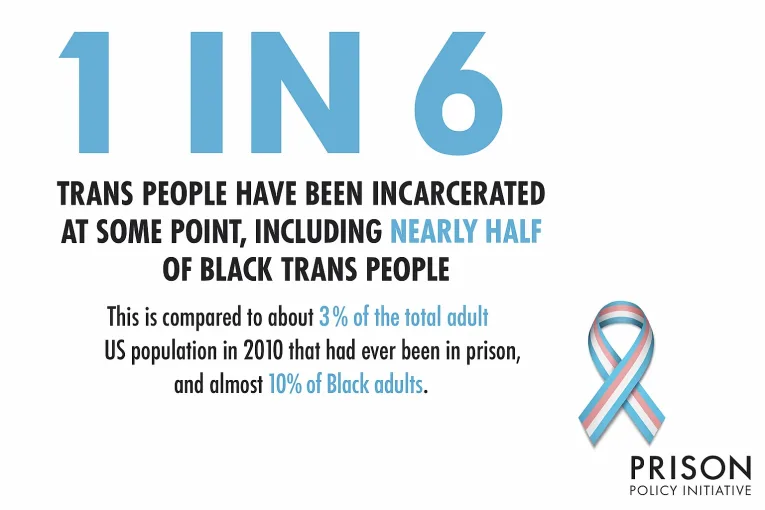
On Transgender Day of Visibility, the Prison Policy Initiative released a sobering reminder of the disproportionate toll mass incarceration takes on trans people—particularly Black trans individuals. A striking figure leads their message: 1 in 6 trans people have been incarcerated at some point in their lives, a number that climbs to nearly half for Black trans people.
This is not simply a statistic—it is an indictment of a carceral system that preys on marginalized identities.
To put this in perspective, the overall incarceration rate for U.S. adults as of 2010 was around 3%, with Black adults facing a significantly higher rate of 10%. These disparities are already deeply troubling. But when you isolate the experiences of trans people—and especially Black trans people—the picture becomes even more dire.
This criminalization is not the result of higher criminal behavior, but of systemic discrimination, targeted policing, poverty, housing insecurity, and lack of access to affirming resources. Trans people, especially those who are Black and Brown, are more likely to be:
• Stopped by police,
• Denied employment or housing,
• Forced into survival economies such as sex work,
• And ultimately funneled into the criminal legal system for simply trying to survive.
Once incarcerated, trans people often face harrowing conditions:
• Misgendering and denial of gender-affirming care,
• Solitary confinement, which is often used under the guise of “protection” but constitutes psychological torture,
• Physical and sexual violence, especially in facilities that house individuals based on sex assigned at birth rather than gender identity.
Far from rehabilitative, these experiences are often re-traumatizing and life-threatening. The system doesn’t just criminalize trans existence—it systematically dehumanizes it.
Trans visibility must not end at celebration—it must demand structural change. Visibility without justice is not liberation.
This is why abolitionist frameworks, like those presented in Maria Hawilo’s Dismantling Mass Incarceration, are so vital. These frameworks challenge us to move beyond surface-level reforms and toward dismantling the punitive institutions that disproportionately harm marginalized communities—while simultaneously building systems of care, housing, healthcare, and safety rooted in dignity and equity.
The criminal legal system was not designed with trans people in mind. In fact, it was designed to control, punish, and disappear those deemed “other.” As we mark Transgender Day of Visibility, we must name the carceral system for what it is: a pipeline of violence that too often ends in silence, erasure, or death.
To truly support trans people—especially Black trans women and femmes—we must:
• Decriminalize survival (sex work, drug use, poverty),
• End solitary confinement and misgendered placements,
• Expand housing, healthcare, and legal protections,
• Invest in non-carceral forms of accountability and safety,
• And listen to trans people, especially those directly impacted, in crafting the path forward.
One in six is not inevitable—it is the product of policy, prejudice, and punishment. Let us make this the last generation where that statistic holds true.
Source: Prison Policy Initiative. (2021). “1 in 6 trans people have been incarcerated.” Link